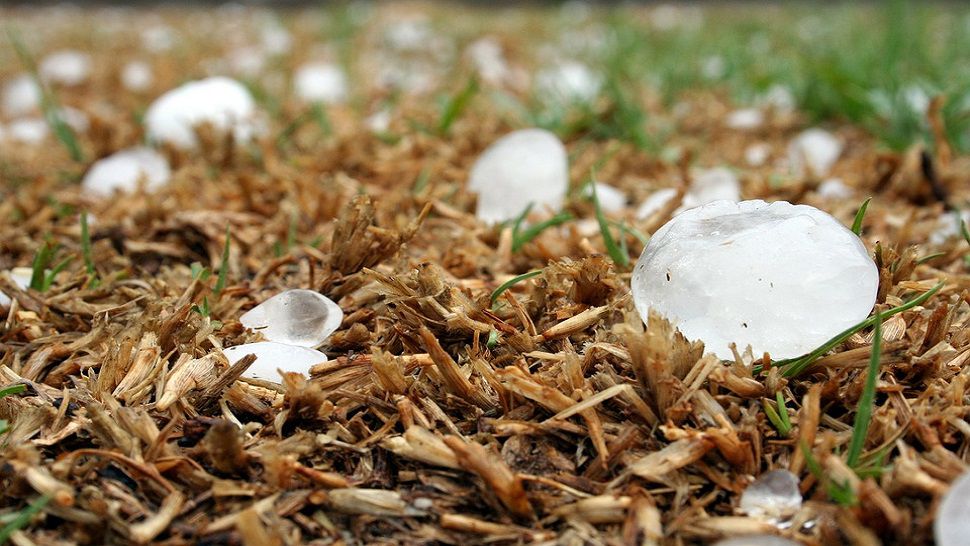
We’ve been having some severe summer weather in Columbus recently. It’s an annual summer occurrence: thunderstorms rumble through, the sky darkens to a pitch-black color, the clouds grumble and flash as if the gods were bowling, and then heavy rain follows. In many of the storms, the rain is the “big, fat” rain that Forrest Gump mentioned in his description of Vietnam–drops so huge that they seem as big as softballs.
But you know you’ve been in a whopper of a storm when, as has happened in Columbus recently, hail is part of the mix. If you’re inside, hail has a unique pelting, rattling sound as it strikes outer walls and rooftops, but if you’re outside–say, a kid playing baseball–you cover your head and run like crazy to the nearest shelter until those frozen pellets stop hurtling down. Gene Kelly might have sung about being in the rain and Bing Crosby might have sung about snow, but nobody sings about being in the hail. It hurts and, I can assure you, the novelty of being bombarded by ice pellets quickly wears off. Cars and rooftops aren’t fond of it, either.
The only positive about a summer hailstorm is that it typically cools things off, which is always welcome during the summer. But the heat returns, and every summer, so do the occasional bouts with hail. It’s just part of the glory of the Midwest.

 Columbus, Ohio is at the eastern edge of Tornado Alley, that wide swath of America stretching from Texas, Oklahoma, and Nebraska across the Midwest to the western edge of the Alleghenies. In Tornado Alley, severe storms are an inevitable and scary part of the late spring and summer months. You notice the sky growing absurdly, impossibly black. You watch for the severe storm warnings, with the lurid colors on the Doppler map showing areas where the killer storms are brewing, and you hope and pray that the storms bypass the residential areas and wreak their havoc in some woodlands or an unfortunate farmer’s field. And typically, the storms do pass by.
Columbus, Ohio is at the eastern edge of Tornado Alley, that wide swath of America stretching from Texas, Oklahoma, and Nebraska across the Midwest to the western edge of the Alleghenies. In Tornado Alley, severe storms are an inevitable and scary part of the late spring and summer months. You notice the sky growing absurdly, impossibly black. You watch for the severe storm warnings, with the lurid colors on the Doppler map showing areas where the killer storms are brewing, and you hope and pray that the storms bypass the residential areas and wreak their havoc in some woodlands or an unfortunate farmer’s field. And typically, the storms do pass by.